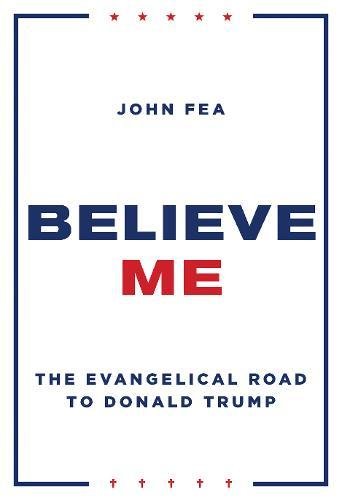The short answer is not very much.
Josephus
We begin with Josephus, writing in Rome in the 90’s CE. After describing the rededication of the Temple in 164 BCE, Josephus adds a brief explanation about the “Festival of Lights”:
“So much pleasure did they find in the renewal of their customs and in unexpectedly obtaining the right to have their own service after so long a time, that they made a law that their descendants should celebrate the restoration of the temple service for eight days. And from that time to the present we observe this festival, which we call the festival of Lights, giving this name to it, I think, from the fact that the right to worship appeared to us at a time when we hardly dared hope for it.” – Josephus Jewish Antiquities 12.324-5 (Loeb Classical Library)This passage offers valuable evidence about first-century practice, but its significance should not be exaggerated. Josephus refers to Hanukkah here not because the festival was important, but because he is rather slavishly following his source in 1 Maccabees, which mentions Hanukkah immediately after describing the rededication of the Temple:
“There was very great joy among the people, and the disgrace brought by the Gentiles was removed. Judas and his brothers and all the assembly of Israel determined that every year at that season the days of dedication of the altar should be observed with joy and gladness for eight days.” (1 Macc 4:58-59 NRSV)In his expansive paraphrase of 1 Maccabees, Josephus gives the festival a name, which has puzzled commentators; he presents the decision to celebrate it annually as the formulation of a law; he explains why it was celebrated, emphasizing the right to worship according to their own “customs”; and he notes that the festival continues to be observed in “the present.”
Josephus’s comment about celebrating the festival in his own day, however, needs to be qualified by his complete silence about Hanukkah everywhere else. He never mentions the festival in any other description of Jewish daily life from the Maccabees to the destruction of the temple in A.D. 70. With the exception of Purim, which, like Hanukkah, is only mentioned once, other Jewish festivals appear repeatedly, not only when Josephus paraphrases his biblical source but also when he discusses later Second Temple events. Thanks to C. J. Goldberg’s helpful compilation, I can tell you that Passover appears twelve times in Josephus’s narrative from 65 BCE – 70 CE; the feast of Weeks (aka. Pentecost or Shavuot) is mentioned four times between the reign of John Hyrcanus (134-104 BCE) and the Jewish revolt in 66 CE; and the festival of Sukkot (or “Booths”) is mentioned eight times between the accession of Jonathan in 152 BCE and the beginning of the revolt against Rome in 66 CE.
It will not do to attribute Josephus’s silence about Hanukkah to an apologetic attempt to distance the Jewish way of life from the sort of nationalistic ideology that prompted the Jewish revolt because (a) Josephus does not do this with other feasts (e.g., Passover in War 2.224, 280; 5.98-105); and (b) Josephus associates Hanukkah not with political independence but with the “right to worship” according to Jewish law.
I conclude that Josephus’s silence is meaningful. Only once, prompted by a source that mentions the decision to celebrate the festival of Hanukkah, does Josephus himself mention Hanukkah. This may suggest that the festival was relatively insignificant in the first century.
The Gospel of John
Mid-way through the Good Shepherd discourse in John chapter 10, the Evangelist pauses to describe the scene:
“Then the festival of the Dedication (τὰ ἐγκαίνια) happened in Jerusalem. It was winter and Jesus was walking in the Temple in Solomon’s Colonnade” (John 10:22-23).Since John is a sophisticated writer who links other major feasts to Jesus, the mention of Hanukkah may well be more than a comment about the weather. But how and to what extent John links Hanukkah to Jesus remains debated.[1] All too often, commentators on John assume that Hanukkah was universally observed, that everyone knew what it meant, and that the bits and pieces of evidence in our surviving literary sources can be stitched together and translated without further ado into a picture of common practice and common knowledge. This picture is then deployed as the theatrical background against which the drama of John plays out. Such an approach is deeply problematic.
In any case, my interest at the moment is with what John contributes to our understanding of Hanukkah not what Hanukkah contributes to our understanding of John. To avoid circularity—arguing from a background whose existence I am interrogating—I will leave to one side questions about the possible symbolic significance of Hanukkah and concentrate here on the explicit reference to the festival of Dedication: John tells us when the festival occurred (winter), he names the festival as “the Dedications” or “the consecrations,” and he locates its celebration in the Jerusalem temple. He does not tell us who celebrated the festival, how popular it was, or whether it was celebrated anywhere else.
Megillat Taanit
Megillat Taanit (“The Scroll of Fasting”) is a 38-line Aramaic list of days on which it is prohibited to fast or to say eulogies for the dead. The text survives in a handful of medieval copies, but there is consensus that it originated in the Second Temple period. The scroll is unusual because it is a non-biblical written text that was treated as a source of halakah in later rabbinic literature. Vered Noam concludes that the text was most likely composed “sometime during the three decades preceding the fall of the Temple” (350). Line 25 of Megillat Taanit mentions Hanukkah:
“On the twenty-fifth of it [Kislev] – Hanukka of eight days, and one is not eulogize.”[2]Conclusion
There are references to Hanukkah, though not to the Maccabees, in the Mishnah (compiled ca. 200 CE), and in later rabbinic literature the celebration of Hanukkah is taken for granted.[3] But as far as I know, the passages I have just quoted are the only direct evidence for Hanukkah that can be dated either during or shortly after the end of the Second Temple period.
On the basis of Josephus, the Gospel of John and Megillat Taanit, I conclude that Hanukkah was celebrated in the first century CE—though not by everyone. There is no indication that it was celebrated by the Qumran sectarians or other Essenes who had an adversarial relationship with the Hasmoneans. Although Hanukkah appears to have been celebrated in the Jerusalem Temple, there is not enough evidence to know who celebrated it, how it was celebrated, what aspects of the story of the revolt were emphasized – or how popular it was. We cannot, in short, say it was a “big festival” or that it was “enthusiastically observed.”[4] We are on firmer ground with Martin Goodman, who suggests that “despite lack of biblical authority for its observance the festival probably remained popular in the first century A.D.”[5]
Other Posts in This Series
Part 1: First-Century Memories of the Maccabees -- A Footnote with Footnotes
Part 2: First-Century Memories of the Maccabees Part 2: The Origins of Hanukkah
Part 4: Memories of the Maccabees in the Dead Sea Scrolls
Part 5: The Maccabean Revolt and the Success of Hasmonean Propaganda
Endnotes
[1] For a review of the options, see Brian C. Dennert, “Hanukkah and the Testimony of Jesus’ Works (John 10:22—39),” JBL 132.2 (2013): 431–51, whose proposal is no more persuasive than the alternatives.
[2] For the text and translation, see Vered Noam, “Megillat Taanit - The Scroll of Fasting,” in The Literature of the Sages Second Part: Midrash and Targum, Liturgy, Poetry, Mysticism, Contracts, Inscriptions, Ancient Science and the Languages of Rabbinic Literature, ed. Shmuel Safrai et al., CRINT II 3.2 (Assen, Netherlands: Van Gorcum, 2006), 339–62. Online here: http://www.verednoam.com/articles/Noam%20MegillatTaanit.pdf.
[3] Gedalyahu Alon, “Did the Jewish People and Its Sages Cause the Hasmoneans to Be Forgotten?,” in Jews, Judaism and the Classical World: Studies in Jewish History in the Times of the Second Temple and Talmud, trans. Israel Abrahams (Jerusalem: Magnes Press, 1977), 1–17.
[4] Nicholas Thomas Wright, Jesus and the Victory of God (Minneapolis: Fortress, 1996), 582, 492.
[5] Martin Goodman, The Ruling Class of Judaea: The Origins of the Jewish Revolt against Rome, A.D. 66-70 (Cambridge: Cambridge University Press, 1987), 12 (emphasis added).








